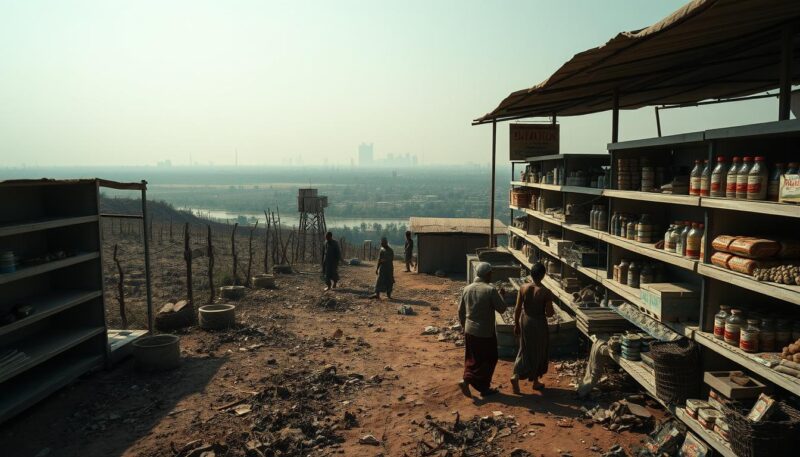The challenge of scarcity permeates every facet of human existence, transcending borders, cultures, and economic standings. Wealth, as illustrated by the remarkable net worth of individuals like Bill Gates, is not a safeguard against this universal issue. In 2017, Gates topped the rich list with an astounding $86 billion, yet even he, like everyone else, is bound by the same finite resource: time, limited to just 24 hours a day. No one is immune to the scarcity problem, which dictates the choices available to us all, whether we are managing personal finances or deciding on national policies.
This article explores the intricate dynamics of scarcity, delving into historical lessons on scarcity and its implications for economic sustainability. By uncovering the roots of our most fundamental economic issues, we provide insights into why all societies grapple with the imbalance between our infinite desires and the restricted resources available to us.
As we navigate the complex world around us, understanding scarcity becomes crucial in realizing the choices we must make. These choices often lead to trade-offs, where selecting one path means sacrificing another—a principle known as opportunity cost. Addressing questions like what to produce, how to produce, and for whom to produce underlines the significance of resource management in achieving economic sustainability. This exploration is not merely academic; it offers profound implications for your decisions, whether in business or everyday life, making it imperative to comprehend the lessons history has to offer regarding scarcity.
The Economic Foundations of Scarcity
Understanding economic scarcity reveals how limited resources impact your choices and the broader market. Scarcity emerges when the demand for a good or service exceeds its availability, leading to crucial economic phenomena. To grasp the intricacies of this issue, you must explore the relationship between limited resources, trade-offs, opportunity costs, and the dynamics of supply and demand.
Understanding Scarcity and Limited Resources
Scarcity fundamentally reshapes how resources are allocated. For instance, a workforce of 20,000 production workers exists alongside only 5,000 available managers, creating a worker-to-manager ratio of 4:1. Each manager needs to oversee 20 workers, illustrating the relative scarcity of managerial resources in contrast to the labor force. This imbalance necessitates prioritizing roles, highlighting how limited resources shape economic landscapes.
The Concept of Trade-offs and Opportunity Costs
Embracing the concept of trade-offs becomes vital in decision-making processes. When you prioritize one resource, for instance, using clean air, you may sacrifice another, such as economic freedom. The protective measures for natural resources often incur costs, showcasing the hidden expenses associated with scarcity. Economists argue that even climate favorable to human welfare often becomes scarce, necessitating strategic decisions influenced by opportunity costs.
Supply and Demand Dynamics in Scarcity
Scarcity intricately ties to supply and demand dynamics. When resources become scarce, a noticeable decrease in supply relative to demand can occur, potentially leading to increased prices and inflation. The Federal Reserve implement contractionary monetary policies, intentionally managing the money supply to keep it relatively scarce, thereby influencing market behavior. Patents in the pharmaceutical industry exemplify intentional scarcity, granting short-term exclusivity that impacts pricing and availability.
Historical Lessons on Scarcity Management
Learning from past societies reveals how they adapted to the pressing challenge of scarcity. Historical lessons on scarcity show patterns of resource allocation and management that defined civilizations. Insights gained from ancient civilizations and modern financial crisis history provide a roadmap for navigating similar challenges today.
Case Studies from Ancient Civilizations
Ancient societies, such as the Mesopotamians and Egyptians, faced significant limitations in available resources. To manage these constraints, they developed sophisticated agricultural techniques and trading systems. For instance, irrigation methods utilized by the Mesopotamians not only boosted crop yields but helped stabilize their economy. Such practices established fundamental principles of resource management that persisted throughout history, allowing these civilizations to thrive despite inherent scarcity.
Modern Economic Crises and Their Causes
The financial crisis history of the 20th and 21st centuries illustrates the consequences of inadequate resource management on a global scale. The Great Depression highlighted the effects of overproduction and underconsumption. In the architectural disaster of the 2008 financial crisis, reckless lending and speculative practices led to widespread economic turmoil. Each event underscored the necessity of prudent resource management to avert systemic failures. Learning from these crises is essential to understanding the delicate balance of demand, supply, and sustainability.
The Role of Resource Management in Sustainable Growth
Successful societies have always recognized the critical role of resource management in promoting sustainable growth. Historical evidence suggests that effective resource management practices can alleviate the burdens of scarcity and foster resilience. A focus on sustainable agriculture, clean energy solutions, and responsible consumption not only addresses current scarcity issues but also prepares societies to face future challenges. By implementing strategic policies, societies can navigate the complexities of resource limitations, ensuring a robust economy and healthier environment.
| Historical Example | Key Strategies | Outcome |
|---|---|---|
| Mesopotamia | Irrigation Systems | Increased agricultural yield |
| Ancient Egypt | Trade Agreements | Enhanced economic stability |
| Great Depression | Government Intervention | Regulatory reforms introduced |
| 2008 Financial Crisis | Risk Assessment Models | Strengthened financial regulations |

Why Do All Societies Face the Problem of Scarcity?
The challenges of scarcity affect all societies regardless of their wealth or resources. Global scarcity issues manifest prominently in our lives, driven by limited resources against the backdrop of potentially unlimited human desires. In recent years, a significant population growth impact has intensified these challenges, forcing us to adapt and strategize to maintain economic sustainability.
Global Scarcity Issues and Their Impact
Economists point out that human wants are infinite, leading to persistent global scarcity issues. Even cultures with substantial resources, like the United States, face shortages in goods and services. This economic principle highlights that scarcity goes beyond individual consumers, influencing societal decision-making regarding resource allocation and prioritization.
Population Growth and Its Influence on Scarcity
As the global population increases, the pressure on our finite resources escalates dramatically. With economic growth linked to better access to resources and technological advancements, neglecting efficient production practices can exacerbate the problem. Ensuring productive efficiency, where resources are used at minimal costs, plays a vital role in addressing scarcity. Utilizing resources wisely promotes maximum satisfaction and enhances societal well-being.

Conclusion
Understanding why scarcity exists is essential for grasping the economic challenges that confront all societies, regardless of their wealth. Throughout history, the constraints imposed by limited natural resources and the effects of unsustainable practices illustrate that the issues of availability and demand are universal. By studying various economic systems, such as capitalism and socialism, you gain insight into how communities navigate the complex landscape of scarcity and abundance.
The relationship between economic sustainability and resource management is complex yet vital. You are reminded that every decision carries opportunity costs, impacting not only current generations but also future ones. Food and healthcare scarcity, exacerbated by factors like climate change and conflict, particularly highlight the urgent need for strategic planning. Therefore, leveraging technological advancements and innovative policies can alleviate, though perhaps not completely eradicate, the pressures of scarcity.
As you face the multifaceted impacts of resource limitations in your daily life and business decisions, consider how the interplay between scarcity and abundance shapes your choices. The successful navigation of these challenges through informed decision-making and effective resource allocation can foster a more sustainable future. Embracing the lessons from history ensures that you are equipped to balance economic needs and environmental conservation, creating a pathway to resilient societies that thrive amid inherent constraints.

